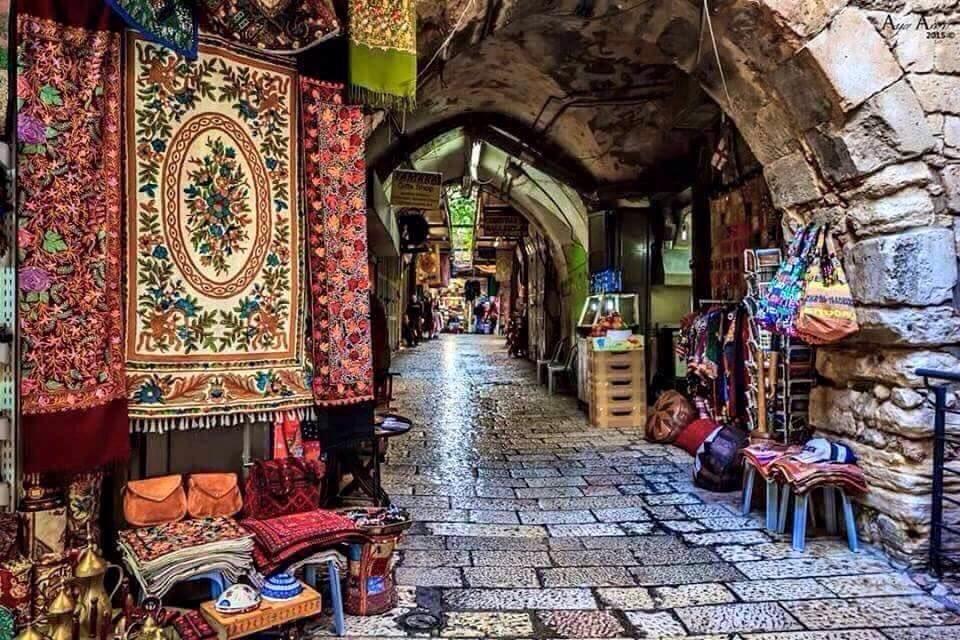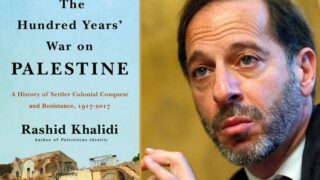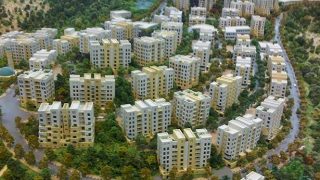Hyperbole aside, events of the past weeks here in Palestine have if nothing else pointed to a major re-imagining of the prospects for Palestinian political unity and vision, effective resistance to Israel and a fresh narrative of the meaning of liberation to a younger generation of Palestinians, one that resonates among their compatriots and their supporters worldwide.
Once the dust from this latest battle has settled, the Palestinian political system will need to draw the latest lessons to gear up for future phases of coordinated confrontation. In particular Palestinian politics going forward can only benefit from the potential for mass mobilization and coherent, coordinated action that has been shown to be within the realm of the possible. The fact that the latest struggle has brought 1948 in all its political, social and geographic dimensions back into the center of attention, suggests a moment where Palestine as a whole is at stake, not only Gaza or Jerusalem or Ramallah but also Jaffa and Haifa and the shatat.
Recent events have also challenged a basic premise of the colonial narrative that has shaped the economy of the Palestinian people since 1948, dividing and ruling it by dominating geography, resources, markets, capital and differential legal regimes. To date, this policy has succeeded in cantonising the once coherent and contiguous Arab economy of Mandatory Palestine, part of the “dual-economy” of British Mandate Palestine. Today all its different components are “super-dependent” on the Israeli metropole. However, the potential revealed by this moment for re-framing Palestinian political struggle with an eye to all of Palestine implies a no-less urgent need to reconsider the overall “Arab” weight in the economic balance of power with and within the economy of Israel.
Palestinian Arab Economic Dependency on the Israeli Metropole
Most narratives of the Palestinian economic “system” still contrast one Palestinian economy (within the borders of the West Bank and Gaza Strip occupied in 1967) against one Israeli economy. However, realities on the ground, and the dynamics underpinning the relationship between the dominant Israeli-Jewish macro-economy and the Palestinian-Arab micro-economies (or markets) within its orbit, instead point to a special 21st century version at the national economy level of a centre-periphery dependency syndrome.
Conventional wisdom continues to delineate the Palestinian economy as covering: the archipelago economy under jurisdiction of the Palestinian National Authority (PNA) in the West Bank; the (now-severed) war-torn economy of Gaza; and, the East Jerusalem Palestinian economy annexed to Israel since 1967. Nominally all part of the occupied territories intended for a single Palestinian state, these fragments somehow are supposed to be reconstituted in one entity in the rosy scenario of a two-state solution, constituting a single Palestinian national economy, coexisting alongside Israel’s. This implies a classic case of faulty theory masking and perpetuating a brutal process that has been proceeding apace since before 1948, namely the advance of the Jewish state-building project throughout the territory of Palestine, against the diminishing space and prospects for building an Arab State anywhere in Palestine.
In a cruel twist of history, the part of the 1947 Partition Resolution 181 concerning the establishment of a Jewish State has been fully, if haphazardly, implemented. Yet the political horizon for a Palestinian Arab State emerging in line with the spirit, much less the borders, of that resolution is nil. To add irony to tragedy, another provision of that forgotten Resolution has become reality despite never being agreed politically: while the land of Palestine should be partitioned into two states, the dual Arab-Jewish economy that existed prior to 1948 should not be. Under UN Partition, the two States were to maintain an “economic union” that was designed in 1947 with the intent of delivering mutual growth and development benefits after independence.
In fact, since 1967 Israeli law, regimes, policies and standards constitute the overriding sovereign economic, trade and financial power throughout the territory of the State and of the oPt, even in isolated Gaza. Any exceptions to this framework granted to the PNA are limited and administrative in nature. The union is not only de-facto since twenty-five years of the Oslo Accords and the Paris Economic Protocol succeeded in creating a “interim period” that is effectively kept alive by all parties. With Israeli settlements in the oPt fully integrated into the Jewish Israeli economy, Palestinian-Israeli economic union is arguably today de-jure from an Israeli perspective at least, on both sides of the now largely unmarked and increasingly obliterated Green Line marking the 1949 Armistice.
The reality on the ground and in the legal/policy regime may belie both the Mandate concept of “Arab-Jewish economic dualism” today or the peace-process mantra of “two states and two economies for two peoples”. But the focus on a Palestinian economy in the oPt and its “relations” with Israel overlooks something else of no less significance to the real Palestinian economic system. Aside from the Palestinian people in exile numbering over seven million, Palestinians living in the WBGS are not the only Arabs living within that Palestinian-Israeli economic union, nor do planners of Eretz Israel see those territories as the sole space of the Arab demographic and economic presence in their colonial midst. Palestinian Arabs who remained in their villages within the 1949 Armistice Lines became Israeli citizens, today numbering some 1.7 million, close to 20% of the Israeli population. To all intents and purposes, this Palestinian space in Israel constitutes yet another deprived, repressed and dependent (Arab) fragment of the former “dual economy” of Palestine.
The Bigger Picture: the Real Palestinian “Economic System”
Any future strategy for leveraging economic development to strengthen the position in a struggle for national liberation and to break the periphery-core dependency system must include that untapped asset of the “Arab economy” in Israel. Political imperatives and correctness may well continue to dictate the contours of a hypothetical economy for an elusive Palestinian State in the WBGS for the immediate future. However, the realities of the enduring, but shattered, “Arab economy” of 1948 Palestine and the experience of Palestinian political, social and economic reconnection since then despite borders, diaspora and differential status, together dictate another story.
My alternative narrative concurs that indeed there remains an “Arab economy” within the historic territory of Palestine. Two distinct economic models do coexist within that territory but without any pretense of parity or catching-up. One of these is the predominant globalized, industrialized, financialized, technologized Jewish economy of the State of Israel. Meanwhile an “Arab regional economy” has survived from the Galilee to the Naqab, within the Israeli economic/security/colonial envelope. Zionist colonization certainly interrupted its development trajectory since before 1948 and geo-politics and globalization have further distorted its structure and diminished its autonomous prospects. But it is a reality.
The actual “Palestinian Arab economy” today is not homogenous, it is hardly inter-connected and actually does not constitute a coherent entity, like its Israeli Jewish counterpart, and hence is not the other party to a defunct and misleading dualist model or even one of true economic union. It is neither post agrarian nor industrializing; it is not a service economy nor is it an export economy. Instead, the usual process of economic structural transformation is distorted or suspended in the web of interests associated with the endurance of the Israeli state-building and colonization project, as well as the degrading impacts of local, regional and global unfettered capitalist expansion. But the shocks to Palestinian peripheries from the colonial confrontation and an unprotected and unequal exposure to liberalization, privatization, globalization and financialization have consistently thwarted the potential for Palestinian economic development.
So, the Palestinian economy can instead be perceived as constituted by different, diverging core Arab regions within the imposed and unequal economic union with the Israeli (Jewish) economy. Despite economic attrition or stagnation, they have resisted the absolute exclusivist logic of colonial encroachment by legal, demographic or political means. These are the remnants of the indigenous Arab economy of Palestine – four (if not more) non-contiguous enclave economies, scattered from the River to the Sea, all under the sovereignty of the State of Israel:
-West Bank: variants of the "free-market economy model:
.Ramallah - neoliberal governance without sovereignty
.Hebron, the industrial engine of Palestine;
.Area “C”, subject to direct Israeli military rule; and
.The northern West Bank corridor to the Arab Galilee in Israel
-East Jerusalem: a story of annexation, isolation and disintegration
-Gaza Strip: Islamic neoliberalism aborted by siege and war
-The Arab regions in Israel, the hinterland of the Arab economy of Palestine
Each of these enclave economies is on its own path of dependence or autonomy in relation to the economy of the Israeli metropole, having lost the historic contiguity that would have kept them together in the dualist scenario under a balanced economic union. Each is peripheral to the Jewish centre, despite their continued usefulness for Israeli resource extraction at various levels. Each is peripheral to the regional (MENA) and global economies. Each is bound to the “national” Jewish/Israeli economy for external trade, financial and other access. Each has been divided forcibly from the others in 1948, reconnected in 1967 and totally united in 1994, then rudely separated since 2000, and only reconnecting in recent years.
Today these regions combined account for around 12% of the national income generated within the orbit of the Israeli Jewish economy, compared to around 40% prior to 1948. This is the reality of the Palestinian economic “non-system” in Palestine today, both on the map and in the policy-making world. Just as Israeli economic planners until the 1990s viewed the WBGS as a lucrative captive market subservient to national prerequisites, so do their policy-makers today view the absorption of the Arab economy and labour force in Israel as essential to spurring future Israeli economic growth.
Which Palestinian Economy for Which State?
Among the failings of academic and policy experts on the Palestinian economy, over and above the perpetuation of the dualism myth is the ease with which they engaged in “planning” in the past two decades for a State of Palestine that has yet to arrive. This was mainly based on “assumptions” that Israel was also truly planning for such a day, which seems not to be the case.
The numerous blueprints, schemes, plans, models, mock agreements, laws, development policies and strategies designed and published since Oslo for the economy of the “future Palestinian State” all share at least three important features. None of them have gotten the Palestinian people a step closer to independence; many are based on dubious interpretation of economic theories, meaningless borders and utopian political assumptions; and, Israeli planning and policy-making have hardly taken note of any of them. These are hard truths that must be appreciated when considering how to plan for a Palestinian economy that is coherent with national political goals, cohesive in its ability to withstand external shocks and pressures and viable in terms of responding to the Palestinian people’s development needs.
The disintegrative path that has now become evident between the disconnected Arab regions will not reverse by market forces alone in favour of Palestinian economic unity within the broader Israeli economic union. The political obstacles to elaborating a pan-Palestinian economic development agenda are significant, the recent battle only pointed to a way forward, but the Palestinian internal political divide remains sharp. In addition, renewed confrontations in Arab Jerusalem have emphasized the vital importance to local economic survival of maintaining the flow of Palestinian shoppers from Israel, while cross border economic exchanges between the West Bank and Palestinians from Israel, valued at close to a billion dollars annually, are highly susceptible to Israeli security measures.
Even in the absence of such external shocks, the different channels of unequal and dependent exchange between Arab regions and the Israeli metropole are not geared to yielding sustained growth and real welfare or development gains for the weaker, isolated Palestinian regions. So, one conclusion is that under either scenario of political stasis and meagre gains, or confrontation and collective economic punishment, the process of “incorporation without integration” that characterizes relations between Palestinians in Israel and the Israeli economy will deepen and become structurally enforced for all Palestinian economic regions under Israeli sovereignty.
Under such dim prospects indigenous Palestinian Arab economic resistance to Judaisation of the land and Zionisation of the governance system cannot be effectively mounted in a sustained or organized manner, as long as political divisions undermine the potential for unified mass action coordinated across Palesrine. Hence recent events have given birth to realistic hopes that political unity can generate economic unity.
Until 2021, the economic peace and quality of life narrative was presented as the only option remaining for Palestinian Arabs, both in the occupied territories and inside Israel, especially in the wake of the disastrous Trump-Netanyahu era. The hitherto unchallenged balance of forces of trade, finance and capital have had the space to create trans-national bonds and markets while distinct Palestinian “national economic security” interests are blurred. In this pre-2021 scenario, mutual Palestinian-Israeli commercial interests and cooptation and collaboration become the norm, rather than the exception.
This sort of outcome is not as unlikely as we might wish to believe. Indeed, such coexistence in the shadow of colonial rule is being realized every day at many points of Israeli-Palestinian economic contact. The reality of Palestinian-Israeli economic entanglement is so omnipresent and deeply entrenched that it would take a revolution in the streets and in the minds of the people to achieve full separation, or at least equality. So, the prospects for two separate, independent economies today appear even more distant than they do for two separate, independent states.
However, the emergence of a new Palestinian popular movement resisting Zionist colonial rule, based on a common agenda of equal civil, human, cultural and economic rights for all Palestinian Arabs as those already enjoyed by Israelis Jews has suddenly demonstrated that decades of conventional wisdom may need to be revisited. Both the exhaustion of the Palestinian strategy of engagement in a two-state peace process to no state, as well as the common experience and aspirations of different segments of the Palestinian people subject to differential degrees of Israeli colonial control, are creating powerful conditions for a new struggle. This is one that may well entail de-emphasizing Palestinian statehood and instead focusing on social justice, political rights and human dignity: a Palestinian Arab economic resistance strategy based on one land and one state for two peoples and economies.
If an Arab economy is still to re-emerge in Palestine from the peripheries to which it has been relegated, the lessons of resisting dependency, promoting decolonization and adopting development strategies pursued with success elsewhere in the world should be heeded. There is no shortage of immediate needs to be attended to. To begin with PNA planners and economic policy makers and investors should factor in the full Arab economic potential of Palestine when conceiving and implementing development projects.
Cross border purchases by Palestinian from Israel of goods and services provides a major cash boost to the West Bank and Jerusalem economies and should be nurtured and institutionalized. Investors and operators in tourism from Jerusalem, Nazareth, Bethlehem and Jericho can team up to maximize the Palestinian tourist offer. Idle Palestinian Arab savings in Israel can be put to productive use through joint investments in real estate development, transport and logistics, and the digital economy. Arab employers in Israel can contract Palestinian labour from the West Bank to work in the local economy, while Palestinian Israeli human capital can fill some gaps in the higher end of the West Bank labour market. Palestinian light industry in the West Bank (food, furniture, aluminum) has secured a growing share of local markets and could be exported to Arab markets inside Israel as substitutes for Israeli products.
All of these new avenues for Palestinian business and financial cooperation within the Israeli economic union are within reach, financially viable and lucrative, and legally feasible. Indeed, Israeli intransigence, racism and the imperatives of its colonial project have already helped all the disparate Palestinian communities to coalesce in a common moment of identity and struggle, regardless of political ideology, geography, religion or class. Rarely have the material conditions been so propitious for a rejoining of Palestine in one place, at one time and with one purpose. They also reflect an economic presence that cannot be ignored by Israel and reveal organic links between Palestinians that have been reignited so many years after their rupture.
Published in Jadaliyya in May 24, 2021.







